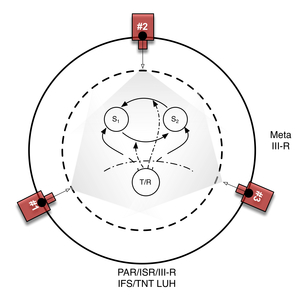
This project is part of on interfacultative and interinstitutional collaboration between TNT and IFS (Institute for Special Education), Department of Speech and Language Therapy and Pedagogy and the BabyLab III-R INLCUDE at LUH. It is embedded into an ongoing collaboration between this Department and Partners at University X Paris Nanterre (BabyLab), University of Strathclyde (Motor Development in Autism and in Early Childhood) and the Child Development Lab in Lushoto (Tanzania). In these collaborations we work In vivo on an Intercultural and Intersubjective account of human communication (III-R) and its disruptions (see Frank/Trevarthen 2015).
To interpret and to understand an interactive scene (between human beings) is always challenging for automatic recognition in information science, but it is an ontogenetically rooted function of the human mind, it is based on inborn and learned facilities by at least the whole human brain.
But even when the ability of scene-interpretation and object recognition is a key feature of human brain development, sophisticated and complex social and institutional settings lead often to communicative desintegration, to failed communication in certain fields of human interaction with sometimes severe consequences for individual development.
Crucial interactional patterns can get lost at relevant transition points of human communication under these conditions. The physical aspects of human communication (gestural and facial communication; body posture; tonal quality of vocal communication: pitch, intensity and timbre) are closely connected to the ongoing emergence of co-created meaning, and the quality and character of the communicative disruption has its physical signature in measurable movement patterns (see e.g. Trevarthen/Delafield-Butt 2015, Lee, 2004, Torres 2015, Negayama et al. 2015, Frank/Trevarthen 2012)
In our research collaboration we are trying to find out in which way computer vision and related disciplines on information technology are able to help to re-establish failed intradyadic human communication patterns in therapy and intervention.
Therefore we are establishing two research areas:
This project is part of the PostDoc research of
Dr. Bodo Frank
BabyLab I3-R INCLUDE
III-R - Applied Intercultural and Intersubjective In-Vivo Research
Faculty of Humanities
Institute for Special Education
Department of Speech and Language Pedagogy and Therapy